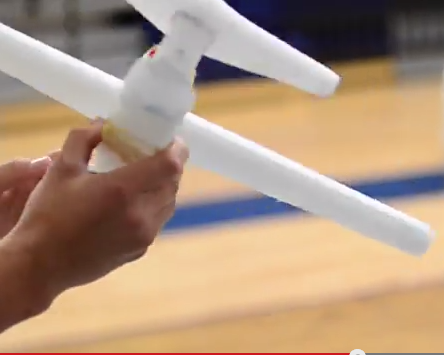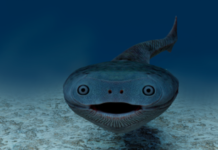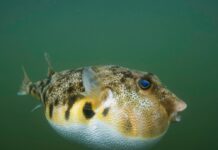From primitive men watching birds soar from tree branches into the sky, to the Wright brothers flying the first successful airplanes at Kitty Hawk, all the way up to jumbo jets and passenger planes taking us on our vacations today, the idea of flying has captivated man for centuries. Mrs. Carver, the leader of the Jesuit ACE (Aeronautical, Chemical, Electrical) Engineering class aims to harness this curiosity, turning it into a learning experience for those planning on pursuing engineering as a college major and later on as a career.
This semester, the ACE Engineering class performed the analysis of gliders in flight project. Mrs. Carver noted that the project is “probably our best application of physics in a real world type of situation.” Students launched gliders that they designed themselves, using physics concepts learned in the unit leading up to the activity. They recorded the flight of the gliders, and “used software to perform a video analysis of their plane”.
Even though the focus of the class is engineering, the course is actually based off of a UT Business program. Mrs. Carver explained that she planned the class as a way of teaching engineering topics but with a business lean. This model allows the class to focus not only on the design aspects of a project, but also on the business side marketability and practical selling points of an idea.
The glider project is what Mrs. Carver calls the “capstone” of a unit. It essentially wraps up all of the topics that students learn in the course, and throws their newly acquired knowledge into a real world application. The students first learned the physics behind the gliders they designed. They discussed how and why planes fly, design aspects of jet engines, and innovations in the design of current engines. The chemical engineering aspect of the course was touched on by having students study the chemistry behind different composites and materials used in the construction of planes. Students also studied resources from Navy pilot’s own information on aeronautics and from NASA, performing simulations of plane and rocket launches.
After this, students began working on the design of their glider. Beginning with paper airplanes, the students went through a prototyping phase. Here they could quickly and cheaply make modifications to the design and function of their plane without worrying about botching a finished product. After polishing their design, students went on to create the real glider. Constructed out of styrofoam, each glider was put through a variety of tests that measured important factors, such as flight distance and safety (determined by the survival of an “egg pilot” put in each plane). The project’s third stage introduced the business lean of the course, as students went into business models of different airlines, and tried to “sell” their plane model, targeting a market based on the performance of their group’s plane.
Trevor Trosclair ’15, a member of the team who created the best glider, said that the project was “a really great introduction into engineering as a whole; it forced us to use actual skills we’d need as engineers outside of school.” Trosclair elaborated on what he found specifically interesting in the project: “What was really interesting was taking things we learned from physics and applying it directly into a physical application. For example, with this project we learned the basics of flight for two days and then the next we were in groups crafting our planes out of styrofoam.” He closed by talking about the business aspect of the course piquing his interest, explaining that “it was interesting learning how to market our product using both asthetics and engineering facts to promote our planes over the competition.”
The glider project isn’t all the ACE Engineering course entails. Mrs. Carver also claimed, “I usually arrange one field trip per year, and last year we got to go stand on the runway at the 301 Fighter wing in Fort Worth.” On this field trip, students were given an up close and personal view of aeronautics, with the opportunity to stand on the runway and watch the fighter jets launch, as well as “see the night vision goggles fighter pilots use that were $30,000 a pair.” Another year, the class walked the mile-long Lockheed Martin assembly line to see where jets are made. Carver stated that she is “in contact with them to see if we can go again this year.”
On where she found the inspiration not only for the glider project and field trips, but also the class in general, Mrs. Carver said “I’m honestly not completely sure. My dad was in the Navy, so I was always fascinated [with topics like aeronautics]…He would always brag about how the best guns are in the Navy, the best pilots are in the Navy. So that may have been part of the motivation, as well as part of why the project has a lot of government links too.” She also touched on the project partially stemming from her general passion and appreciation for flight, “I think man has an early fascination with flight; it’s something that everyone is aware of and everyone thinks is super cool, and it’s always been really interesting to me that we can achieve that with the basic calculations we learn in physics.”
Carver also spoke about the creation of the course, and where she found the idea to give it a business aspect: “When I was developing the engineering class, there was nothing available for high school engineering…So what I did to form these classes is I visited different college campuses like UT, A&M, Michigan and Stanford…I attended the open houses that these schools hold, and sat in on some of the engineering classes, and what I saw was that a lot of the engineering programs at these schools were pushing people to become project managers and international engineers, so it felt natural to build that kind of business lean into the course. You’re building something for a target market, and you’re seeing if you can build something specific to parameters a customer gives you, for example, and can you make all of this work.”
Whether one is planning on going into engineering as a career path in the future, or is purely fascinated by flight, planes, and what makes aeronautics tick, the ACE Engineering course is filled with engaging topics and experiments that are sure to inspire genuine interest in a class, as opposed to just waiting for the bell to ring.
Video by Vernon Mullen, Jesuit Advancement Office






